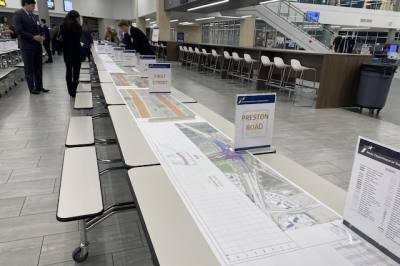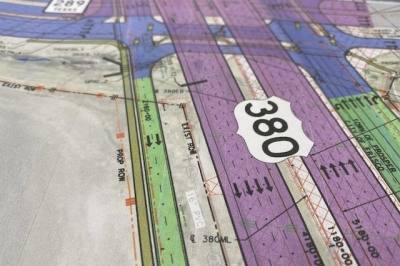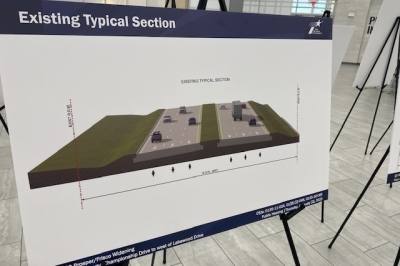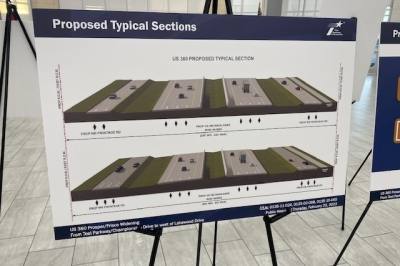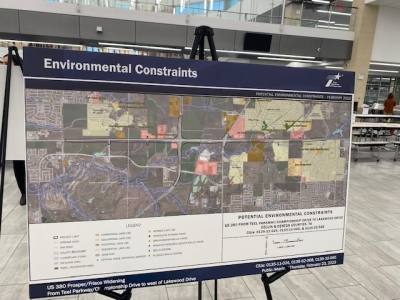The Texas Department of Transportation held a public hearing Feb. 23 in the cafeteria at Rock Hill High School in Frisco to discuss the Frisco-Prosper portion of a five-project plan to improve US 380 in North Texas.
“It’s a regional goal to make US 380 a controlled-access highway from Denton to Greenville,” TxDOT Public Information Officer Madison Schein said.
For Frisco, the plan is to widen US 380 from four lanes to six from Lakewood Drive to Teel Parkway—a project that will cut through Collin County and cost approximately $890 million, according to documents provided at the hearing.
“[The project] is one section of our overall county line to county line schematic environmental process for [US] 380,” said Travis Campbell, TxDOT’s director of transportation planning and development.
Presented as an open house, TxDOT representatives and project consultants filled the high school’s cafeteria with design layouts, timeline information, visual aids, cost estimates and specific project details in an effort to answer any lingering questions about the project.
Environmental impact studies for widening the 5.9 miles worth of road began in spring 2022 and were also presented at the hearing.
The environmental impact of the project studied how construction would affect the land surrounding the project. Most of the land directly affected by the widening is not residential, according to graphics at the hearing.
One possible concern addressed by project consultants at the hearing was the possibility of residents and businesses possibly being forced out by a suddenly larger road.
“On this project there are no displacements,” Schein said.
The threat of being displaced refers only to those who are forced to move because construction will cut directly through a person’s business or home, Schein said.
There is still a chance a home or business could be affected by construction in smaller ways, such as going over a utility line, but so far the study has not indicated it will, Schein said.
“Where we are in the study [...] we don't have anything like that right now,” Schein said. “They’re going to continue to look to make sure utilities are along all lines how they're supposed to be.”
Only a handful of Frisco residents came to the hearing, which was expected by the hearing’s organizers and unlike the turnout seen at a public hearing for the McKinney portion of the development project, which was much higher.
“Because we're staying on alignment, and there were no displacements on [the Frisco portion], we weren't expecting a huge turnout,” Schein said.
One of the main reasons for the expansion is to handle the growing populations of Denton and Collin counties as well as the traffic projected to come with it.
Frisco alone grew 71% from 2010 to 2020, according to census data included in the environmental assessment. The Collin County and other North Texas areas also saw population increases around the same time.
Frisco resident Noah Weiss said increased traffic on roads would be better solved by additional tolls on existing roads or by investing in public transportation, such as a metro line between counties, instead of larger highways.
“Every single freeway widening project that's been done in the metro area over the past 20 years has not been able to sustain a decrease in congestion longer than five years as far as I'm aware,” Weiss said.
The Feb. 23 meeting was the last public hearing on this portion of the US 380 project and the last opportunity for residents to speak directly to TxDOT representatives and consultants about their concerns.
TxDOT officials will continue to accept and address public comments submitted through the website until March 10.
A final decision on the proposal is expected by mid-summer, Schein said. If the project is approved, TxDOT will begin the bidding process for contractors in 2026.
“The actual turning-dirt day will depend on when you get full funding for the project,” Campbell said.
More information on the project, including documents and graphics presented at the hearing, and public comment information can be found on the TxDOT website.





